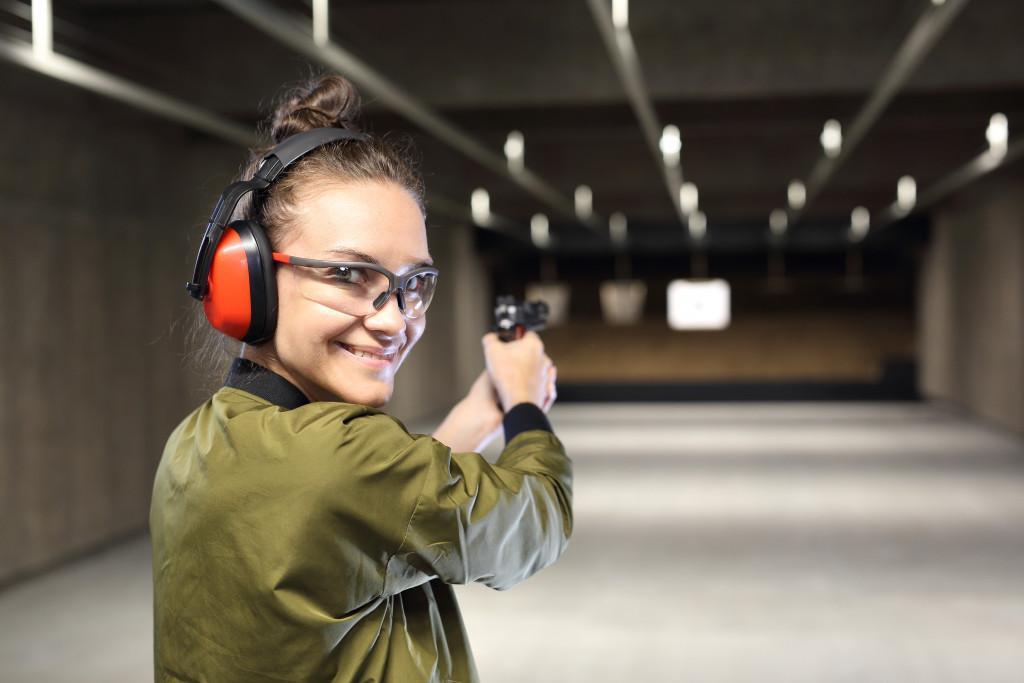Most people want to be more comfortable with weapons and improve their shooting abilities in a risk-free environment. That’s the main reason why they go to an electronic indoor shooting range. While learning how to become a great shooter might take much time, there are a few simple techniques you can easily remember that can get you on the correct course quickly. Keep them in mind the next time you plan on spending some lead.
Take It Easy
Slowing down is the first step towards improving your aim! Speed is something that everyone strives for, yet precision is something that is lost in the pursuit of speed. If your target starts to appear like it’s been fired at with a shotgun, calm down and spend some time working on the principles of shooting. Once you’ve mastered the rhythm and precision of firing slowly, you’ll be able to increase the speed of your shot.
Exercise
Exercise is an essential factor to consider when trying to improve your shooting accuracy. When you’re shooting, you’re using much energy. Doing specific exercises can help you maintain your stamina for lengthy shooting sessions, such as camping expeditions. Some activities you may do are shoulder rotations, wrist strengthening, and lunges for stability and balance, to name a few examples. Adding a little weight to the rifle’s muzzle might help you improve stamina and accuracy by forcing you to keep your aim for brief periods.
Do Dry Fire Practice
First, have a few dry fire drills to make sure you have sound mechanics before proceeding to the range and using up ammo. Always have your firearm unloaded before doing dry fire practice, as implied by the name. You could also put up a mock target so you can practice your aim. With no noise or recoil for contenders, you only have to think about the essentials — your posture, how you pull the trigger, and so on.
Trigger Control
Trigger control is a critical component of any shooting technique. A “surprise break” is what we need to obtain optimum trigger control. You can achieve this break by applying equal and progressive pressure on the trigger until you are surprised by the hammer’s fall. In the absence of a “surprise break,” the round typically misses the target. Unexpected breaks are crucial since the trigger fingers operate and perform independently of other parts of your body.
Controlled Breathing
You have a choice of four ways to breathe while you shoot:
- Take a deep breath and shoot when you feel you have full lungs
- As soon as you’ve exhaled completely, shoot once you have empty lungs
- Inhale, exhale approximately halfway, wait, and then shoot.
- No pauses, no hesitations. Breathe as you’re firing.
Taking a breath while shooting might impair accuracy since the movement of your chest can cause your perspective to shift while on target. It’s a good thing that breathing follows a regular pattern of inhaling (diaphragm expansion) and exhaling (diaphragm relaxation). As a result, it can be managed. Many shooters wait until after they’ve exhaled to regulate breathing when there’s usually a natural pause. Exhaling induces a contraction of the chest and relaxation of the musculature. You shouldn’t force it since the goal is to relax. Because you have relaxed muscles after exhaling, it’s simpler to cease breathing than after inhaling.
A single technique, on the other hand, may not work for everyone. To find out what works best for you, try a few different things.
Keep Your Stance in Mind
When shooting, your standing posture has the same impact on your ability to hit the target as your trigger pull. Practice your novice shooting posture when you’re at the range, which is ensuring your feet are apart for about shoulder width. For right-handed shooters, the right foot should be slightly backward and the left slightly forward. Try to lean forward a bit. Having a tight grip also helps you gain recoil control and quickly aim your muzzle back to your goal. Although there are several other shooting stances to master, this should be what you practice the most as a beginner.
Final Thoughts
Your accuracy isn’t going to increase on its own overnight. It’s vital to practice, but you can also do other things to improve. It’s crucial to remember that getting better takes time and work, just like everything else. The purpose of this is not to discourage you but to inform you that you can develop your accuracy if you put in the effort, have the patience, and have a goal in mind.


